All issues

Volume 14 (2005)
- Issue 3 Pages 227-
- Issue 2 Pages 107-
- Issue 1 Pages 2-
Volume 14, Issue 3
Displaying 1-5 of 5 articles from this issue
- |<
- <
- 1
- >
- >|
-
[in Japanese]2005Volume 14Issue 3 Pages 227-235
Published: October 10, 2005
Released on J-STAGE: March 02, 2011
JOURNAL FREE ACCESSDownload PDF (1027K) -
Juji Tsuchiya, Masayoshi Asano, Susumu Tachibana, Iwao Kumazawa, Hajim ...2005Volume 14Issue 3 Pages 236-244
Published: October 10, 2005
Released on J-STAGE: March 02, 2011
JOURNAL FREE ACCESSIn breast cancer mass screening, we compared cases of cancer that had been overlooked by physical examination (PE), ultrasound examination (US) and mammography (MMG), and verified the usefulness of tripartite mass screening using these methods simultaneously. Among 30 cases of cancer detected by tripartite mass screening in a 3-year period, nine cases were overlooked by PE, six by US, and seven by MMG, giving respective detection rates of 70%, 80% and 77%. However, excluding one tumor that was overlooked because it lay outside the MLO field, the detection rate for MMG was 79%. With regard to bipartite mass-screening with two methods, the detection rate for joint PE·US was 90%, that for PE·MMG was 93%, and that for US·MMG was 97%, the latter being the most efficient.
Tumors that had been overlooked by PE and MMG were significantly smaller than those that had been detected, but this was not the case for tumors that had been overlooked by US. Therefore we suggest that oversight during US examination is due to difficulty of diagnostic differentiation between cancer and fatty tissue or cyst, etc. rather than tumor size.
We found that cases overlooked by PE had a significantly lower pathological grade of invasion than cases overlooked by MMG, even though the former tended to show lymphatic metastasis most frequently. Furthermore, all of these metastatic breast cancers had a smaller diameter ranging from 0.8cm to 0.9cm.
Our results suggest that joint use of US·MMG mass screening without PE is the most efficient approach. However, because the current mass screening program also involves PE, we conclude that tripartite mass screening is still the best method.View full abstractDownload PDF (1155K) -
Hatsuo Yoshida, Hiroshi Iwanami, Koujirou Urazumi, Naoto Katagata, Sad ...2005Volume 14Issue 3 Pages 245-253
Published: October 10, 2005
Released on J-STAGE: March 02, 2011
JOURNAL FREE ACCESSIn 2001, biennial breast cancer screening with mammography was started in Koriyama City for women aged 40 years or over. The screening involved both physical examination, including inspection and palpation, and mammography performed separately. Women with abnormal findings on physical examination were recalled, while those without such findings underwent medio-lateral oblique projection mammography. There were a total of 15, 246 responders during the three-year period 2001-2003.
The recall rate after physical examination was 3.1% and breast cancer was detected in 25 women (0.16%). For 13, 310 women who underwent mammography, the recall rate was 3.9% and 25 breast cancers (0.18%) were detected. Combining these two subgroups, the overall recall rate was 6.5%, the cancer detection rate was 0.33%, the ratio of cancers detected among women who were asked to attend for a recall examination was 5.0%, and the ratio of cancers detected among women who underwent a recall examination was 5.6%. Early cancers detected at Stage 0 or 1 comprised 32 (64%), and lymph node metastasis was positive in 12 women (24%).
Thus the results of our screening reached satisfactory levels in terms of the five items proposed by the Breast Imaging Reporting and Data System of the American Radiology Association. In order to further increase the quality of breast cancer screening, proper determination of categories at mammography reading and standardization of recall examination techniques, including histopathological study, are required.View full abstractDownload PDF (1006K) -
Yasuo Koike2005Volume 14Issue 3 Pages 254-258
Published: October 10, 2005
Released on J-STAGE: March 02, 2011
JOURNAL FREE ACCESSSeven thousand three hundred and seventeen women who visited the breast department at Nagano Cancer Center as first-time outpatients and underwent detailed breast examination during a 20-year period were divided into two groups according to the presence or absence of subjective symptoms.
Risk factors of breast cancer in these two groups were compared in terms of patient age at the time of the visit, and the following results were obtained.
1. The breast cancer detection rate in the age group with subjective symptoms was significantly higher than that in the group without such symptoms.
2. Irrespective of the presence or absence of subjective symptoms, the breast cancer detection rate tended to rise with increasing age.
3. Irrespective of the presence or absence of subjective symptoms, a family history of breast cancer, age at menarche, the number of live-born babies, and a history of artificial abortion were not revealed to be risk factors of breast cancer.View full abstractDownload PDF (609K) -
Shiyoichi Aiba, Keiichi Endou, Takayuki Kanou, Mami Kikuchi, Atsushi H ...2005Volume 14Issue 3 Pages 259-267
Published: October 10, 2005
Released on J-STAGE: March 02, 2011
JOURNAL FREE ACCESSMass screening for breast cancer in Gunma prefecture covered a total of 907, 204 women in the 4-year period starting from 2001, resulting in an increase in the cancer detection rate over that of conventional screening by inspection and palpation alone, and a reduction in the cross-sectional area of the tumor at the time of surgery.
On the other hand, the number of registered cancer patients in Gunma prefecture was 460 in 1999, and mass screening showed that only 46 (10%) of them underwent surgery, and 265 (57. 6%) had symptoms, indicating a low coverage rate of mass screening. Moreover, age-group analysis of individuals revealed a low rate of breast self-examination. These results indicate that it is socially and administratively important to improve the coverage rate of mass screening by education in the practice of breast self-examination and to convince women of the effectiveness of screening by mammography.View full abstractDownload PDF (1524K)
- |<
- <
- 1
- >
- >|